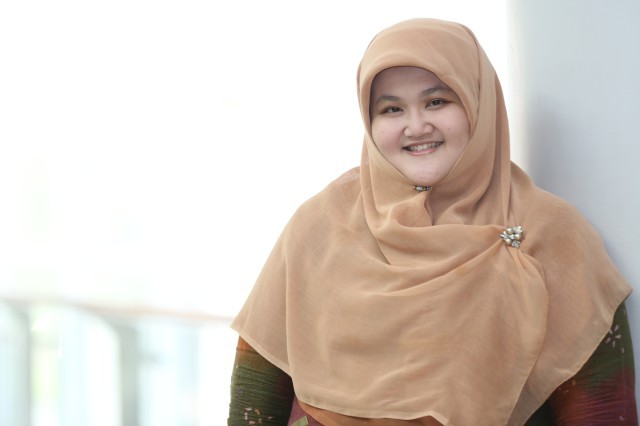Case Document
PT TINAMITRA MANDIRI: WHERE DO WE GO FROM HERE?
Tinamitra Mandiri was established in 2010 in Jakarta with the focus of sustainable development for better life. The company’s main vision is to become a leading provider of clean energy and major player in utilization of alternative energy resources as well as pioneer for sustainable community development projects. Within the past decade many private companies have acted upon this opportunity for the uprising need of natural gas, as a relatively cheaper alternative fuel compared to petrol by bringing the natural gas in other medium form, such as through CNG (Compressed Natural Gas). Tinamitra Mandiri’s CNG Businesss under the name of Tinagas is a subsidiary focusing on providing equipments and natural gas fuels. For Indonesia in particular, natural gas has become an increasingly important resource and a global commodity. As Tinamitra Mandiri plans to strengthen its foothold in Indonesia’s energy market, it will be very likely for them to keep encouraging the conversion of fuel source in the market through variety of strategies. Changes in government regulations and market condition may remain to be the most deciding factors of the success of natural gas marketing efforts in Indonesia. Given its low penetration and low infrastructure coverage, it remains to be seen as how natural gas infrastructure development can support natural gas industry in Indonesia. Nevertheless, the gas industry market remains a viable and potential business opportunity waiting to be explored.
THE NEW KID IN TOWN: MINI “COUNTRYMAN” LAUNCH
MINI is an easily recognizable name in the car industry, and the company aimed to make that true in Indonesia as well. The financial crisis of 2008 showed the strength of the Indonesian economy, as it maintained a 6-8% growth rate in GDP while developed countries in the West stumbled. Furthermore, Indonesia boasts a huge potential market for MINI with both population growth and median age increasing. The automotive industry saw substantial growth in its market. Within one year, 2010 to 2011, car sales in Indonesia jumped by 17%, or 900,000 new vehicles. In general car sales, MINI and its mother company, BMW, face stiff competition from the likes of Toyota, Nissan, Honda, GM, Suzuki and Daihatsu, all of which are expanding. Japanese producers, in particular, make up 95% of the market.
To start its bid to win over the Indonesian premium car market segment, MINI chose the “Countryman” car model as its main product. The car itself came in two models: the S Countryman and the Countryman. For the MINI Countryman, its competitors in size and function come from BMW mostly, followed behind by Mercedes and Audi. The management team was able to divide its target market segment into two distinct groups, 1) the creative individuals and 2) high-income families. In order for the Countryman to reach to the over 300,000 potential customers, MINI needed to translate its brand values into the Indonesian context successfully. The management team agreed to three main objectives: leveraging the MINI global reputation, promoting the vehicle’s unique aspects, and launching a unique marketing scheme.
GREEN BAY PLUIT: DISCOVER MARKET OPPORTUNITY
The development of the property industry is currently increasing significantly and provide options to the broader community in choosing the products that they want the property in accordance with the needs , ranging from product apartment , condominium , kiosks , and residential homes
PT Agung Podomoro Land Tbk . is a development company that provides hybrid concept of property through their latest product is the Green Bay Pluit which is a combination of residential properties and shopping centers.
Although with a unique concept which is owned by Green Bay Pluit , there is a phenomenon faced by companies that kiosk sales slowed compared to the sale of apartment and condominium. After observation it was found that the problem of kiosk products that have not been focused target market , positioning is not clear and has not been optimally integrated marketing mix for product kiosk. Therefore, this case study to present to invite participants to analyze and develop marketing strategies with the aim of resolving the problem of Green Bay.
MR. SAFETY: THE CO-BRANDING STRATEGY OF PT BERSAMA BANGUN PERSADA
This case describes how PT Bersama Bangun Persada (BBP) – an Indonesian distribution company of Fischer, a wall fixing’s market leader product from Germany – tried to find a solution to their problems. BBP had been trying to find a way to being non-dependent from their principal product brands which could be withdrew anytime if they did not perform and deliver the number as requested, especially in facing high competition from other products with lower price.
The management had performed a co-branding strategy of their own brand, Mr. SAFETY, with their represented brand, Fischer. The strategy was conducted to avoid unnecessary conflict and without sacrificing the company good partnership collaboration with the Germany principal, which could act as umbrella brand for several brand that currently distributed by the company.
HOLCIM: OFFERING SOLUTIONS THROUGH MARKETING INNOVATION
This case discusses how Holcim Indonesia differentiates themselves from the stagnant competition in the cement industry by implementing integrated marketing communication. Holcim came out stronger when they launched their “Solusi Rumah” program. The program targeted the low- and middle-income earners in the suburban and rural areas as a continuation of their disaster relief support for the victims of Aceh and Yogya.
The dilemma of the case focuses on what Holcim Indonesia should do in order to continue growing and consistently bringing innovation in the market. The hurdle is that people perceived cement as a commodity product.
SPACETOON: SURVIVING IDEAL KIDS PROGRAM IN INDONESIA
SpaceToon Kid’s TV is currently the first and only television station exclusively dedicated to children in Indonesia. The channel is driven by a great concern about the development of children as the future leaders of Indonesia. SpaceToon Kid’s TV exists aims to provide quality shows that are both entertaining and educational. The SpaceToon’s vision is to actively enhance attitudes, morale, skills, and to broaden the knowledge of Indonesian kids by providing selected and quality programs.
In general, children mean big business. Companies that target the children’s market use several mediums to attract children: TV advertising, electronic games, attractive packaging, films and magazines for children. In Indonesia, data from the National Statistics Center show that the 2005 children’ population aged between 0-15 was 83,883,364, with an annual growth rate of about 1.3%. The 2009 Indonesia Kid Market Survey found that children in Indonesia have a daily pocket money average of Rp 5,200. The survey also found that Indonesian children were an influential market demand worth about Rp 200 trillion a year.
However, SpaceToon’s idealistic objectives did not result in big business. SpaceToon could not grab the advantages of the children’s sector Because children’s programs were not cash cows in the television business. Few companies advertise on this type of programs because it is not highly ranked on the Nielsen ratings. High-rank programs include Sinetron (Indonesian soap operas), reality shows, blockbuster movies and other entertainment programs usually aired on prime time (7-10 P.M.). Another reason is that there is intense competition among TV programs for children. In 2008 Nielsen reported that Global TV (GTV), SpaceToon, Rajawali Citra TV Indonesia (RCTI), and ANTV are the top five TV stations in the children’s market, in both 5-14 and 15-19 age brackets.
BLITZMEGAPLEX: RAISING THE BARS OF FUN AND FANTASY
In late 1980’s cineplex concept was popular in Indonesia and was one of the favorite place for the young people to hang out. There were only several cineplex players in Indonesia; however the Group 21 was the dominant players.
In 2006, Blitzmegaplex came with the concept of one stop entertainment and Beyond Movie tagline. In each of Blitzmegaplex location, there were eight auditoriums in minimum, which at least one theatre equipped with state-of-the-art RealD 3D technology for viewers to enjoy 3D movies. Blitzmegaplex also provided several entertainment corners such as Blitzgamesphere where game lovers could play Xbox 360 and Nintendo Wii games either alone or in group.
Besides its one stop entertainment concept Blitzmegaplex introduced “Blitzcard” as a medium to facilitate customers to book the movie ticket ahead of time or even for the same day performance.
ALL NEW CRV: ALIGNING MARKETING STRATEGY FROM GLOBAL INTO LOCAL
This case illustrates how the Honda prepared and globally market its product, the All New CR-V. as a global player in the automotive industry, Honda CR-V prepared toward multinational research to fit with consumer expectation. Markets its products globally, Honda has the advantage in terms of economy of scale and greater marketing opportunities.
When the CR-V to market in Indonesia, Honda do domestic marketing such as choosing the target market, product positioning, and integrated marketing communication. Many factors contributed to the success of the CR-V in Indonesia, but the value proposition CR-V looks to be a key factor. Honda is able to provide driving comfort sedan to a Jeep with a relatively lower price than its competitors at that time. Through this case study participant is expected to learn how to prepare a global company doing domestic product and marketing to increase product penetration.
BSD CITY : BIG CITY, BIG OPPORTUNITY
Preconceptions about models of housing in Indonesia had begun to emerge since the ancient kingdoms in Indonesia. In each chapter of its history every kingdom had a housing concept that was almost the same, although in the model and style of the building were sometimes different.
Various models and styles of Europe were presented by the Dutch in the development of housing in Indonesia when the Dutch came to power in Indonesia in the 15th century AD. Old patterns that putt Kraton as the center of every things then shifted in the arrangement of the economic center which became the foundation of the city arrangement.
From the two models of housing that exist at the time, was an embryo for the emerging of business and property developers in Indonesia. Then that management is more neatly arranged by the government of Indonesia. This can be seen by the emerged of Perum Perumnas, BTN, and etc. Besides models of the building that existed have more styles and a variety of models.
Until 2009, the population in Jakarta was 7,871,215 peoples, as stated by Abdul Kadir as the Head of the Population and Civil Records of DKI Jakarta. With the rapid development of economic activities and with the creation of new employment fields had attracted workers from outer area, had lead to urbanization problems. Uncontrolled urbanization had caused various problems, including the emergence of imbalances.
With such an imbalance, there arose a variety of other problems such as lack of discipline of life, security, slum areas, homeless, crime, health activities, education, urban transportation and etc. Thus, the rapid population growth was the major problem that was greatly influenced the development of Jakarta, and therefore the need for government to made policies surrounding buffer area of Jakarta, including Tangerang.
RANCH MARKET: PURSUING PREMIUM SUPERMARKET
This case describes the story of Ranch Market Indonesia from 1998 to 2003. In this period, with regard to their expansion, Ranch Market was willing to open its third store in Jakarta. Mr. Nugroho had several options regarding the location, store concept, and target market.
The students are expected to learn segmentation, target market selection, and retail positioning. Segmentation is a combination of retail segmentation and regular segmentation, with each completing the other. Selection of the target market is not only for consumers to be served, but also includes location since this case discusses the opening of outlets. The positioning discussion focuses on the concept of store and position relative to other retail stores. Discussion of the store concept is interesting because Ranch Market has a unique concept and a narrow target.









